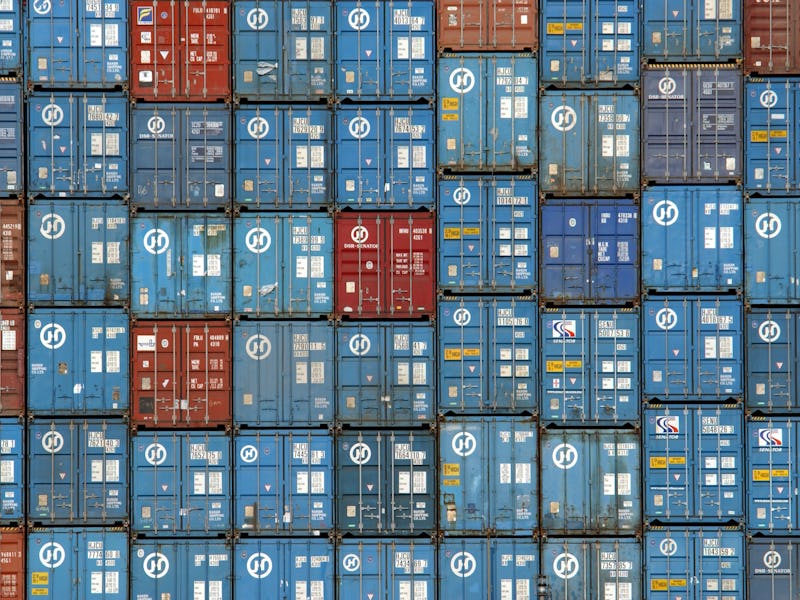Nuclear Weapons Hidden in Cargo Containers Won't Remain Hidden for Long
A new method of detection may mean safer shores.

Researchers have developed a new method of detecting weapons-grade uranium and plutonium hidden in cargo containers.
The proof of concept, announced today in a research paper published in Scientific Reports, was developed by scientists from the Georgia Institute of Technology, the University of Michigan, and Pennsylvania State University. If the concept scales to actual conditions, the technique has the potential to reveal smuggled nuclear material that would pass unnoticed using current detection methods.
It’s nearly impossible to inspect the more than 10 million crates of cargo that enter the United States every year using the current system of passive radiation detection. Shielded nuclear material can be thought of as a Russian doll: the small payload inside has layer upon layer covering it. Passive detection can identify a dense metal somewhere in those layers of steel, but it can’t identify what that metal is. It could be uranium, or it could be something relatively benign like tungsten.
Schematic shows how a fan-like beam of gamma particles created by an ion accelerator would pass through a shielded radioactive material inside a cargo container, and be measured on the other side with Cherenkov quartz detectors.
It’s a slow and somewhat unreliable process. Lead can shield nuclear material relatively easily, and there’s no guarantee that the material detected is actually nuclear material. The process also has the potential for disaster if done sloppily. The smallest nuke — called the “Backpack Nuke” — could cause unfathomable damage if it exploded in a population-dense area, and it was small enough to fit in a backpack: 10 inches in diameter, 15 inches long, and somewhere around 50 pounds.
That’s where the new technology comes in.
More than 10 million cargo containers enter the United States every year.
This new technique uses gamma ray imaging to read through the layers of a cargo container. The gamma rays can measure a material’s density as well as the atomic number, and a delayed neutron emission signature certifies whether the material is nuclear or not. This method has the added bonus of giving off less radiation than conventional methods.
“The gamma rays of different energies interact with the material in very different ways,” Anna Erickson, an assistant mechanical engineering professor at Georgia Tech, says. “And how the signals are attenuated will be a very good indicator of what the atomic number of the hidden material is, and its potential density.”
Unlike current methods, security personnel would be able to tell the difference between two heavy metals like uranium and tungsten because the neutrons would give off different signatures.
This new method would make inspection more reliable.
The researchers haven’t conducted real-world tests yet, just a proof of concept. They have learned that the physics works, however, so it may be just a matter of time before security personnel can effectively see through the Russian-doll layers of cargo containers.
“If the technique can be scaled up and proven under real inspection conditions,” a press release reads, “it could significantly improve the ability to prevent the smuggling of dangerous nuclear materials and their potential diversion to terrorist groups.”